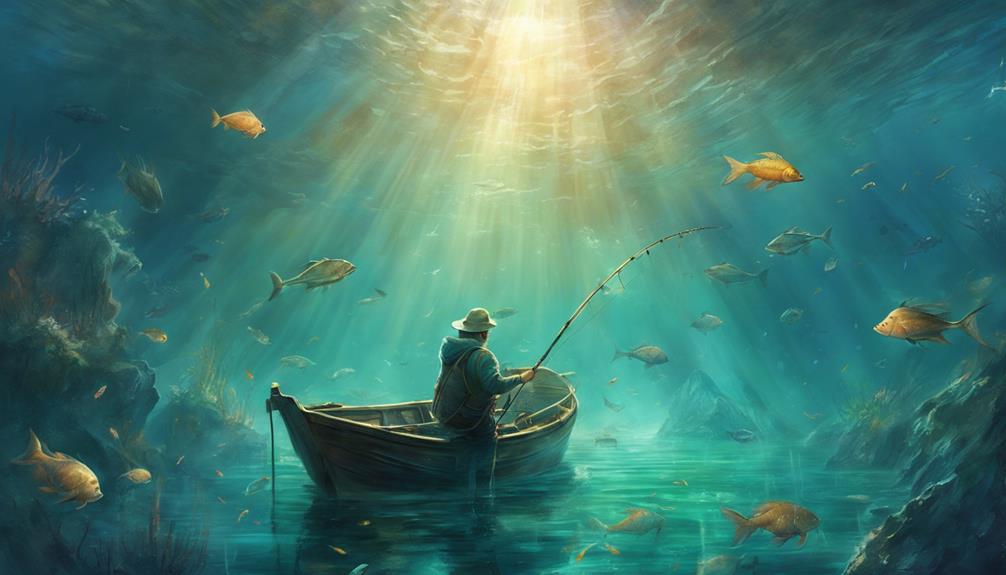So, you know that line fishing in marine sanctuaries is a delicate balance, right?
Well, imagine this – using barbless hooks can be a game-changer for reducing harm to marine life.
But did you know there are six more key practices that can make your fishing experience not only sustainable but also more rewarding?
Stick around to uncover these essential tips that will elevate your fishing game while safeguarding the marine environment.
Key Takeaways
- Proper disposal of fishing line is crucial to protect marine animals from harm.
- Barbless hooks reduce stress and injury to fish and wildlife during catch-and-release.
- Opt for lead-free sinker alternatives like tungsten to minimize environmental impact.
- Training sessions enhance skills, awareness, and responsible behavior for sustainable line fishing.
Proper Disposal of Fishing Line
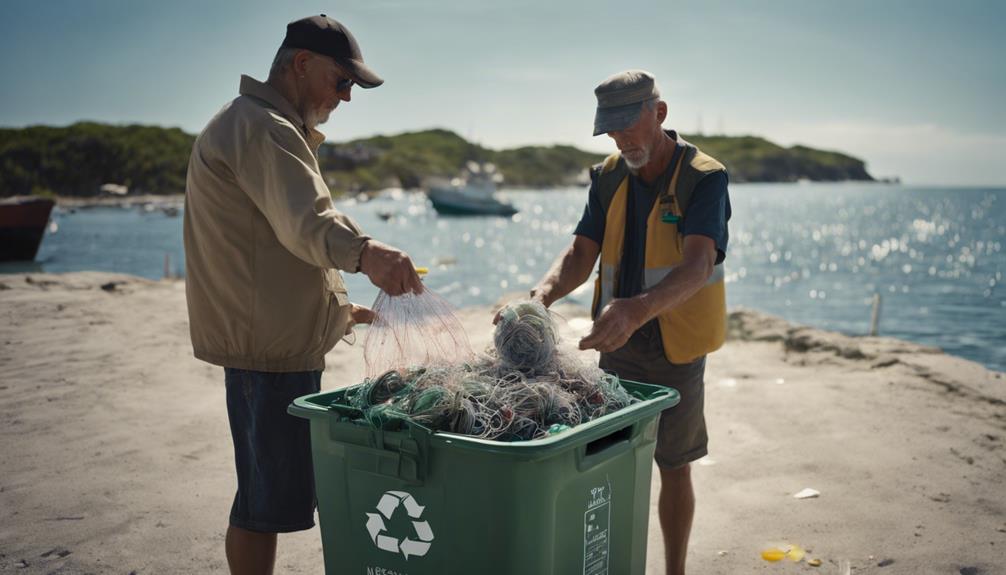
To keep marine life safe, always remember to dispose of your fishing line properly. Improperly discarded fishing line can pose a serious threat to marine animals. When fishing line is left in the water or on the shore, marine life like birds and sea turtles can become entangled, leading to injuries or worse.
Additionally, animals may mistakenly ingest the line, causing harm to their digestive systems. Responsible disposal methods, such as using recycling programs or designated monofilament recycling bins, can help prevent these dangers.
Use of Barbless Hooks

Consider switching to barbless hooks when fishing in marine sanctuaries to protect fish and wildlife during catch and release. Barbless hooks are designed to minimize harm by lacking the traditional barb, making it easier to swiftly release fish with reduced stress and injury.
This choice is especially vital for safeguarding protected species, as it lowers the risk of deep hooking and enhances the survival chances post-release. Opting for non-offset, non-stainless steel, barbless circle hooks demonstrates a responsible approach that supports conservation in marine sanctuaries.
Minimizing Hook Injuries
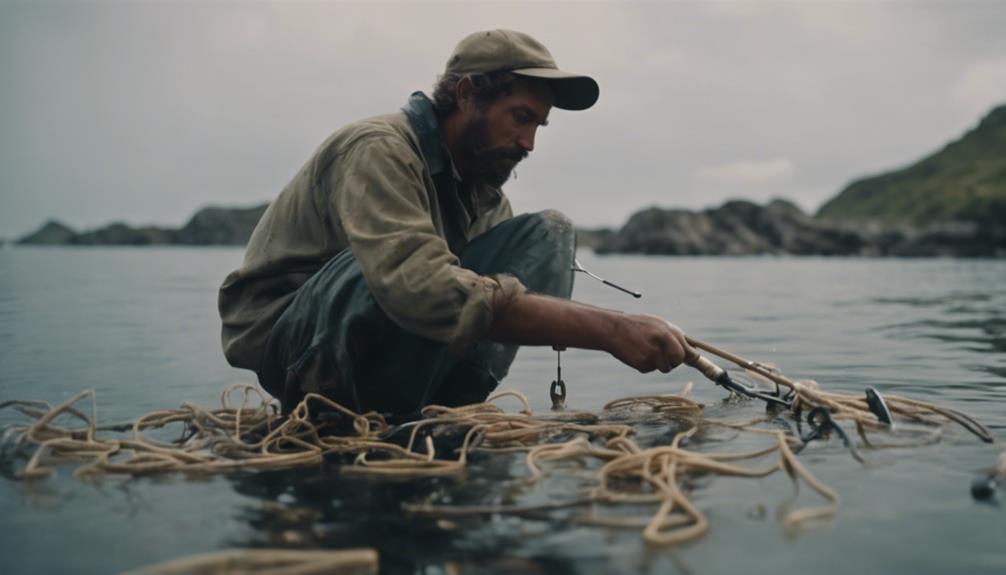
Using barbless hooks markedly decreases the risk of hook injuries to marine life in marine sanctuaries. To minimize hook injuries during fishing in these delicate ecosystems, consider the following:
- Opt for barbless hooks for easier removal and reduced harm during catch and release.
- Practice proper gear management to prevent accidental hookings and injuries.
- Stay vigilant and monitor your surroundings before casting to avoid entanglements and protect wildlife.
- Choose non-offset, barbless circle hooks to support responsible angling practices in marine sanctuaries.
- Remember that your actions can make a significant impact on the well-being of marine life, so fish responsibly and prioritize the safety of the ecosystem.
Avoiding Lead Sinkers
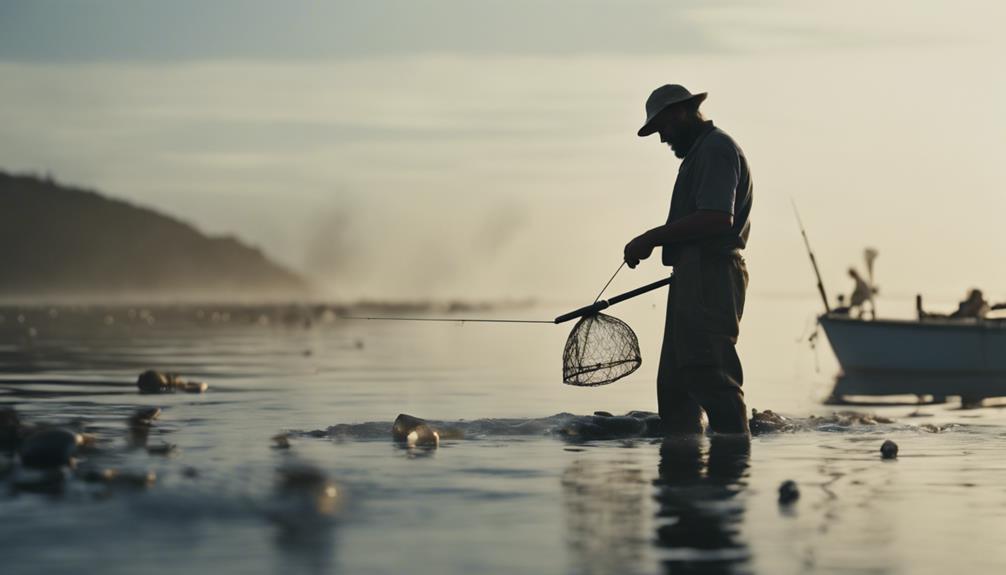
Hey there!
Let's chat about avoiding lead sinkers.
Have you considered trying out lead-free options like tungsten, steel, or tin sinkers?
Making this switch not only protects marine life but also supports sustainable fishing practices – win-win!
Lead-Free Tackle Options
When fishing in marine sanctuaries, opting for lead-free tackle is essential to safeguard wildlife and the environment from the harmful effects of toxic lead sinkers. Here are some lead-free tackle options to ponder:
- Tungsten: A dense and environmentally friendly alternative.
- Steel: Durable and non-toxic, ideal for various fishing conditions.
- Tin: Lightweight and effective without posing risks to marine life.
- Non-toxic materials: Choosing gear made from safe materials protects the ecosystem.
- Support conservation: By using lead-free tackle, you contribute to the preservation of marine ecosystems.
Choosing these alternatives demonstrates responsible fishing practices and helps in the conservation efforts within marine sanctuaries.
Environmental Impact Awareness
To safeguard marine life and ecosystems, it's crucial to be mindful of the environmental impact of lead sinkers when fishing in marine sanctuaries. Lead sinkers can release harmful substances into the water, putting marine life at risk.
Choosing lead-free options like tungsten or tin sinkers is a proactive measure to prevent lead contamination in these delicate habitats. The danger of lead poisoning from sinkers poses a significant threat to fish, birds, and other wildlife in the ecosystem.
Sustainable Fishing Practices
Let's explore why opting for lead-free sinkers is key for sustainable fishing practices in marine sanctuaries. When it comes to sustainable fishing, choosing non-toxic alternatives over lead sinkers is important for wildlife protection and conservation efforts. Here are five reasons why making the switch to environmentally friendly tackle benefits marine ecosystems:
- Lead sinkers pose risks to marine life and the environment.
- Tungsten, steel, or tin sinkers are safer alternatives to lead.
- Non-toxic options help protect aquatic habitats.
- Using lead-free sinkers supports sustainable practices.
- Opting for environmentally friendly tackle contributes to marine sanctuaries' conservation.
Protective Eyewear Usage
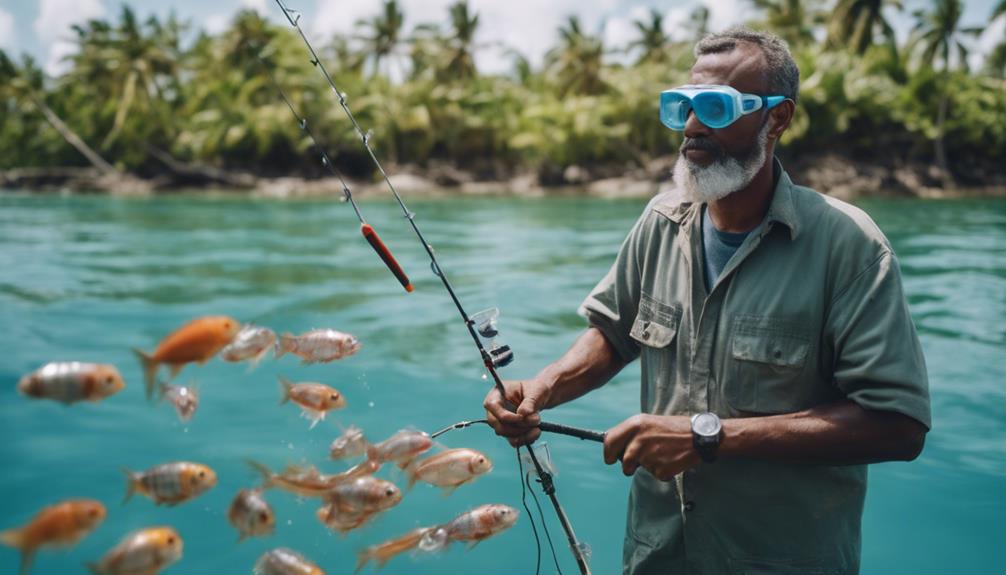
Consider donning polarized sunglasses to enhance your line fishing experience in marine sanctuaries. These shades help reduce glare, making it easier to spot marine life and potential obstacles in the water, ultimately boosting safety and efficiency.
With improved visibility, accidents can be prevented, ensuring a smoother fishing experience. By protecting your eyes and minimizing strain, sunglasses allow you to focus on your line fishing activities comfortably.
Wildlife Interaction Management
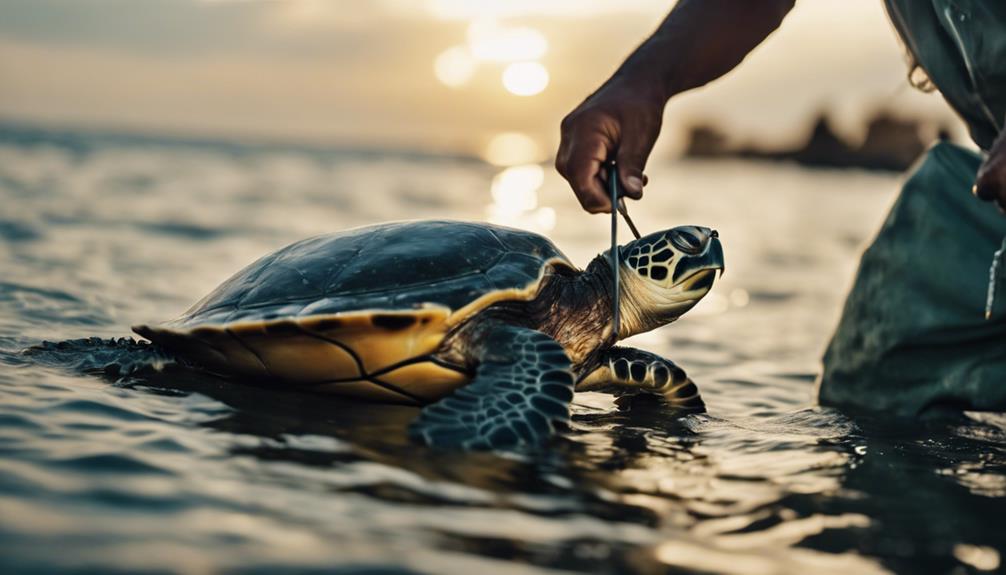
Enhance your line fishing experience in marine sanctuaries by properly managing wildlife interactions to avoid accidental hookings and entanglements with marine life.
- Monitor Gear: Regularly check your gear to prevent harm to protected marine life.
- Quick Response: Act swiftly in case of accidental hookings to minimize harm to marine animals.
- Be Vigilant: Scan your surroundings before casting to prevent wildlife interactions.
- Responsible Gear Use: Proper gear management is important to minimize negative impacts on marine life.
- Safety First: Prioritize safety by being cautious and attentive to wildlife while line fishing in marine sanctuaries.
Seeking Expert Guidance
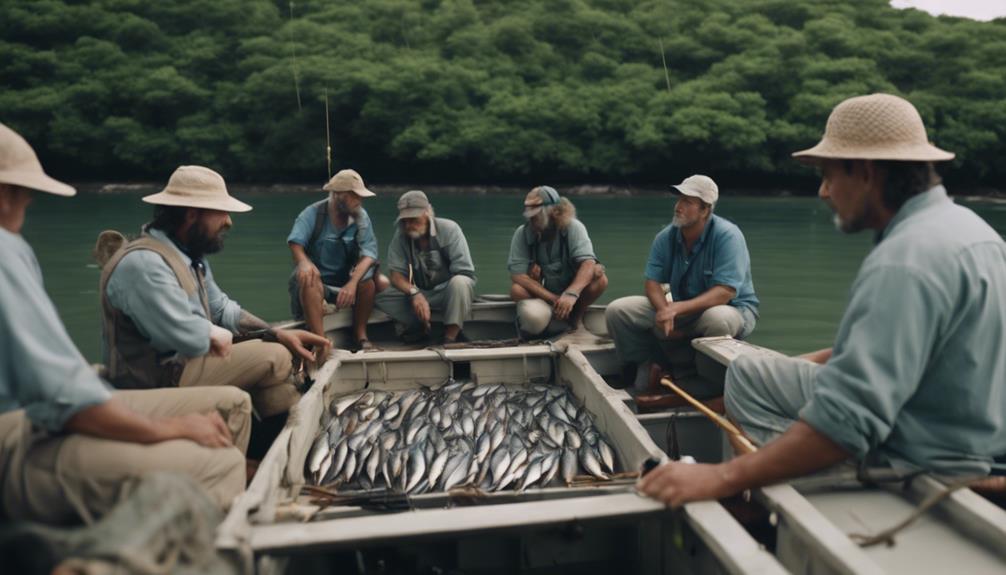
If you're looking to improve your line fishing skills in marine sanctuaries, consulting with local experts and attending professional training sessions can be immensely helpful.
These resources can provide you with valuable knowledge about fishing regulations and conservation practices, ensuring that you're fishing responsibly and in line with sanctuary goals.
Seek out guidance from those who've experience maneuvering the specific rules of marine sanctuaries to enhance your fishing experience while minimizing your impact on the marine ecosystem.
Consulting Local Experts
When seeking to navigate fishing regulations and practices in marine sanctuaries, turning to local experts for guidance proves invaluable. Local experts can provide valuable insights on fishing regulations, permitted areas, and protected species within marine sanctuaries. Consultation with these experts helps in understanding the unique characteristics of the marine environment and how to fish sustainably. They can assist in avoiding areas with sensitive habitats or species to minimize impact on the ecosystem.
Additionally, local experts may offer tips on best practices, gear selection, and ethical fishing techniques specific to the marine sanctuary. Seeking advice from experts enhances the fishing experience while promoting conservation and responsible angling practices.
- Local experts provide insights on fishing regulations and permitted areas.
- They help in understanding the unique characteristics of the marine environment.
- Local experts assist in avoiding sensitive habitats or species.
- They offer tips on best practices and ethical fishing techniques.
- Seeking advice enhances the fishing experience and promotes conservation.
Professional Training Sessions
Local experts have laid a solid foundation for understanding fishing regulations and practices in marine sanctuaries; now, let's explore how professional training sessions can further refine your skills in line fishing.
These sessions provide expert guidance on line fishing techniques, sustainable methods, and conservation practices specific to marine sanctuaries. You'll receive hands-on instruction to enhance your angling skills while learning about responsible behavior and ecosystem conservation.
Expert trainers share insights on regulations, best practices, and the importance of preserving marine environments. By participating in professional training, you not only bolster your awareness but also guarantee responsible behavior, contributing to the sustainable enjoyment of marine sanctuaries.
Get ready to dive deeper into the world of line fishing with expert guidance and practical knowledge.
Conclusion
So, next time you head out for some line fishing in a marine sanctuary, remember these 7 key practices to guarantee you're fishing responsibly and sustainably.
By using barbless hooks, disposing of fishing line properly, avoiding lead sinkers, and wearing protective eyewear, you can help safeguard marine life and ecosystems.
Keep learning, keep exploring, and keep fishing with care!
👨👩👧👦 Dwight’s a married dad of 4 who loves to cast a line 🎣 into both fresh and salt waters. His heart belongs to his family and the sea. 🌊 #FamilyMan #FishingLife #DadOf4 🐟✨

